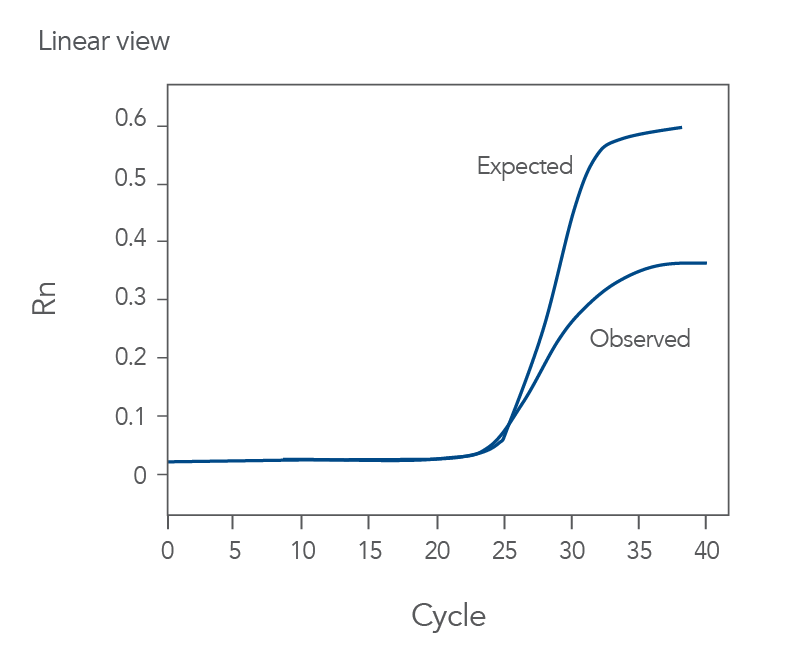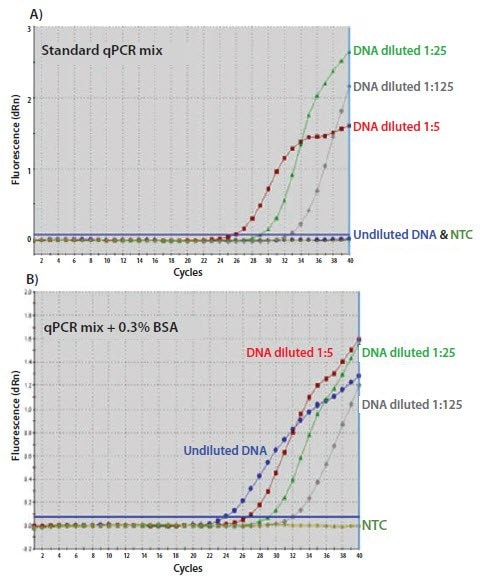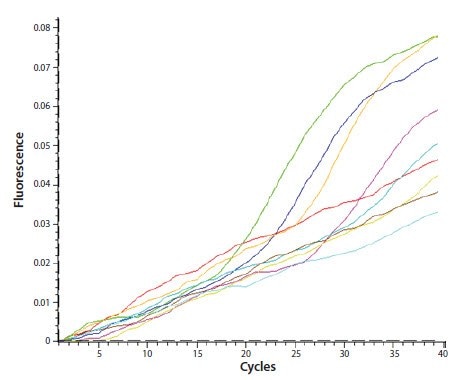Qrt-Pcr Troubleshooting: Essential Tips for Accurate Results
QRT-PCR is a powerful tool in molecular biology. It helps in quantifying DNA and RNA.
Despite its efficiency, troubleshooting issues can be challenging. Understanding the common problems and solutions in qRT-PCR can save time and effort. Many scientists and researchers face issues like low yield, contamination, or inconsistent results. These problems can hinder progress and cause frustration.
But don’t worry. This blog will guide you through the most frequent issues and their fixes. By knowing what to look for, you can improve your experiments. Let’s dive into the world of qRT-PCR troubleshooting and make your research smoother and more effective. Stay with us to learn the best practices and tips to overcome these hurdles.
Introduction To Qrt-pcr
Quantitative Real-Time PCR (qRT-PCR) is a powerful technique in molecular biology. It allows researchers to measure gene expression levels in real-time. This method is sensitive, specific, and reproducible. It plays a crucial role in various fields of biological research.
Importance In Research
qRT-PCR is vital in research due to its high sensitivity. It can detect even small amounts of nucleic acids. This makes it a preferred choice for many studies. Researchers often use it to validate results from other experiments.
Another key advantage is its quantitative nature. It provides precise measurement of gene expression. This helps in understanding gene function and regulation. Researchers can compare expression levels across different samples or conditions.
Common Applications
qRT-PCR has a wide range of applications. One common use is in disease diagnosis. It helps detect viral and bacterial infections. For instance, qRT-PCR was crucial during the COVID-19 pandemic.
It is also used in genetic research. Scientists use it to study gene expression in various organisms. This can lead to discoveries about genetic diseases and potential treatments.
Another important application is in biotechnology. Companies use qRT-PCR to monitor the production of biological products. This ensures that the products are of high quality and consistency.
Here is a summary table of the common applications of qRT-PCR:
| Application | Description |
|---|---|
| Disease Diagnosis | Detects viral and bacterial infections |
| Genetic Research | Studies gene expression in organisms |
| Biotechnology | Monitors production of biological products |
In conclusion, qRT-PCR is a versatile and essential tool in molecular biology. Its applications in research and industry are numerous. Understanding its importance and uses can help in troubleshooting and optimizing experiments.
Preparation Of Samples
Proper preparation of samples is crucial for successful Qrt-Pcr. This section covers key steps, including sample collection and RNA extraction.
Sample Collection
Collecting samples correctly is the first step in ensuring accurate results. Follow these tips for effective sample collection:
- Use sterile containers to avoid contamination.
- Label samples clearly to prevent mix-ups.
- Collect an adequate amount of sample as required for the analysis.
- Transport samples on ice to maintain their integrity.
Rna Extraction
RNA extraction is a critical process for Qrt-Pcr. It must be done carefully to ensure high-quality RNA. Here are steps to follow:
- Lyse cells: Use a lysis buffer to break open cells and release RNA.
- Remove contaminants: Use organic solvents like phenol-chloroform to separate RNA from proteins and DNA.
- Precipitate RNA: Add alcohol to precipitate RNA, making it easier to collect.
- Wash RNA: Use ethanol to wash the RNA pellet, removing any remaining impurities.
- Resuspend RNA: Dissolve the RNA pellet in RNase-free water or buffer.
Ensure all reagents are RNase-free to avoid RNA degradation. Store extracted RNA at -80°C for long-term storage.
Primer Design
Primer design is critical in qRT-PCR troubleshooting. Good primers ensure accurate and reliable results. Poorly designed primers can lead to false positives, non-specific amplification, or low yield.
Choosing The Right Primers
Choose primers that are 18-24 bases long. This length provides specificity and efficiency. Aim for a melting temperature (Tm) between 50-65°C. Similar Tm for both primers ensures uniform binding. Check for primer specificity using BLAST. This avoids non-specific binding. The GC content should be 40-60%. This balance helps with the stability of the primer-template complex.
Avoiding Primer-dimer Formation
Primer-dimers reduce the efficiency of the qRT-PCR. They occur when primers bind to each other. To avoid them, ensure no more than three consecutive bases are complementary. Use software to check for potential dimer formations. Avoid primers with complementary 3′ ends. This reduces the chance of dimers forming during the reaction.
Reagent Quality
Ensuring the quality of reagents is crucial for successful Qrt-PCR experiments. Poor-quality reagents can lead to failed reactions, inaccurate results, and wasted resources. This section will delve into selecting high-quality reagents and proper storage techniques to enhance your Qrt-PCR troubleshooting skills.
Selecting High-quality Reagents
Choosing high-quality reagents ensures the reliability and accuracy of your Qrt-PCR results. Here are some key points to consider:
- Source: Purchase from reputable suppliers known for high standards.
- Purity: Opt for reagents with high purity levels to avoid contaminants.
- Certification: Look for certifications like ISO or GMP for quality assurance.
- Batch Testing: Ensure the reagent batch has been tested for consistency.
Proper Storage Techniques
Proper storage of reagents is essential to maintain their integrity and effectiveness. Follow these storage tips:
- Temperature Control: Store reagents at recommended temperatures, usually between -20°C and 4°C.
- Avoid Light Exposure: Keep reagents in dark, opaque containers to prevent light degradation.
- Minimize Freeze-Thaw Cycles: Repeated freezing and thawing can degrade reagents. Aliquot reagents if needed.
- Humidity Control: Store reagents in dry conditions to prevent moisture-related issues.
By selecting high-quality reagents and implementing proper storage techniques, you can significantly improve the reliability of your Qrt-PCR results.
Optimization Of Reaction Conditions
Optimizing reaction conditions in qRT-PCR ensures accurate and reliable results. It involves fine-tuning various parameters to improve efficiency and specificity. Two critical factors include temperature settings and MgCl2 concentration. Proper adjustment of these can significantly impact the success of your qRT-PCR experiments.
Temperature Settings
Temperature settings play a crucial role in qRT-PCR. The annealing temperature must be optimized for each primer set. A typical range is 50-60°C. Start by performing a gradient PCR. This helps to identify the best temperature for primer binding. High temperatures can reduce non-specific binding. Low temperatures can improve primer annealing. Always consider the melting temperature (Tm) of your primers.
Denaturation temperature is also important. It usually ranges from 94-98°C. Ensure complete separation of DNA strands. This allows primers to bind efficiently during the annealing step. Extension temperature is typically set at 72°C. This is the optimal temperature for Taq polymerase activity.
Mgcl2 Concentration
MgCl2 concentration is another key factor in qRT-PCR. It affects enzyme activity and primer binding. Standard concentration is usually around 1.5-3.0 mM. Too much MgCl2 can increase non-specific amplification. Too little can reduce the efficiency of the reaction. It’s essential to find the right balance.
To optimize MgCl2, perform a series of reactions with varying concentrations. Observe the effect on your PCR product. Adjust as needed to achieve clear and specific amplification. Proper MgCl2 concentration ensures accurate and reliable qRT-PCR results.

Credit: www.idtdna.com
Contamination Prevention
Contamination is a common issue in Qrt-PCR experiments. It affects the accuracy of your results. Preventing contamination is crucial for reliable data. Follow these guidelines to minimize contamination risks.
Best Practices In The Lab
Maintain a clean workspace. Use sterile equipment and reagents. Regularly clean surfaces with disinfectants. Wear gloves and lab coats to reduce contamination. Change gloves frequently.
Designate separate areas for reagent preparation and sample handling. Avoid cross-contamination by using dedicated pipettes. Use filter tips to prevent aerosol contamination. Dispose of waste properly and promptly.
Using Negative Controls
Include negative controls in each run. They help detect contamination. Negative controls should contain all components except the template DNA. Monitor these controls for unexpected amplification signals.
Negative controls validate your results. If you see amplification in negative controls, contamination is likely. Troubleshoot and identify the contamination source. Repeat the experiment after addressing the issue.
Data Analysis
Data Analysis is a crucial part of Qrt-PCR troubleshooting. Proper analysis helps in identifying errors and optimizing the procedure. It involves interpreting Ct values and employing normalization techniques to ensure accurate and reliable results.
Interpreting Ct Values
The Ct value represents the cycle threshold, where the fluorescence signal exceeds the background level. A lower Ct value indicates a higher amount of target nucleic acid. Conversely, a higher Ct value suggests a lower target concentration.
To interpret Ct values effectively, ensure that the baseline and threshold settings are correct. Consistency is key. Use the same settings across all samples in an experiment.
Avoid interpreting Ct values in isolation. Compare them with control samples to identify potential issues like pipetting errors or instrument malfunctions. Note any significant deviations and investigate further.
Normalization Techniques
Normalization helps reduce variability in Qrt-PCR results. It ensures that differences in sample amounts and quality do not affect the data. The two main normalization techniques are:
- Housekeeping Genes: Use genes that are consistently expressed across all samples. Common examples include GAPDH, ACTB, and 18S rRNA. Ensure that the housekeeping gene is not affected by the experimental conditions.
- Relative Quantification: This method compares the Ct values of the target gene to the Ct values of the reference gene. The delta-delta Ct method is widely used for this purpose.
Normalize each sample’s Ct value using one of these techniques. This will produce more reliable and accurate results.
Pro Tip: Validate the stability of your housekeeping gene across different conditions. This ensures accurate normalization.
Utilize software tools for data analysis. They simplify the process and reduce errors. Proper data analysis is essential for obtaining meaningful Qrt-PCR results.

Credit: www.sigmaaldrich.com
Troubleshooting Common Issues
Experiencing issues with qRT-PCR can be frustrating. Often, these problems can be traced back to a few common issues. Understanding these will help you get back on track quickly. Let’s dive into two frequent problems: no amplification and non-specific amplification.
No Amplification
No amplification happens when no product is detected. First, check your reagents. Ensure they are fresh and stored correctly. Next, examine your template RNA. Poor quality RNA can lead to no amplification. Use a spectrophotometer to check its purity.
Another factor is primer design. Primers must be specific to your target sequence. Verify the melting temperatures (Tm) of your primers. They should be within 2°C of each other. Also, ensure the annealing temperature during PCR is correct.
Non-specific Amplification
Non-specific amplification occurs when you get unexpected products. This can muddy your results. Verify your primer specificity. Use software to check for possible non-specific binding sites. Adjust the annealing temperature if needed.
Another solution is to optimize your MgCl2 concentration. Too much or too little can cause non-specific bands. Finally, check your template concentration. Too much RNA can lead to non-specific products. Dilute your samples and try again.
By addressing these common issues, you can improve your qRT-PCR results. Stay patient and methodical. Success will follow.
Advanced Tips For Reliable Results
Advanced tips can greatly improve your qRT-PCR results. Consistency and accuracy are crucial for reliable data. Following these tips will help ensure your experiments are successful and reproducible.
Replicates And Controls
Always include technical and biological replicates in your qRT-PCR experiments. Technical replicates help identify pipetting errors or instrument variation. Biological replicates account for variability in biological samples. Use both to ensure robust data.
Include proper controls to validate your results. Negative controls confirm no contamination. Positive controls ensure the reaction works. Housekeeping genes serve as internal controls for normalization.
Software Tools For Analysis
Use software tools designed for qRT-PCR data analysis. These tools can automate calculations and reduce errors. They help with tasks like baseline correction, threshold setting, and efficiency calculation.
Popular tools include Bio-Rad CFX Manager, Thermo Fisher Cloud, and Qiagen’s Rotor-Gene Q software. These programs offer user-friendly interfaces and reliable algorithms. They streamline data processing and interpretation.
Regularly update your software to access new features and improvements. This ensures you benefit from the latest developments in qRT-PCR technology.

Credit: www.sigmaaldrich.com
Frequently Asked Questions
How Do I Solve Poor Qrt-pcr Results?
Check RNA quality and quantity. Ensure primers are specific. Optimize annealing temperatures.
Why Is My Qrt-pcr Efficiency Low?
Low efficiency can result from poor primer design, degraded RNA, or improper reaction setup.
What Causes Non-specific Amplification In Qrt-pcr?
Non-specific amplification often results from suboptimal primer design or incorrect annealing temperatures.
How Can I Improve Qrt-pcr Reproducibility?
Use consistent sample preparation methods. Validate primers. Maintain consistent reaction conditions.
Why Am I Seeing No Amplification In Qrt-pcr?
Possible reasons include degraded RNA, incorrect primer sequences, or missing reaction components. Double-check all steps.
Conclusion
Effective qRT-PCR troubleshooting ensures accurate results in your experiments. Understand the common issues. Check reagents and equipment regularly. Optimize protocols for each assay. Maintain consistency in your techniques. Precision and attention to detail are key. Always document changes and results.
This helps identify patterns and solutions. Regular practice improves your troubleshooting skills. Stay updated with new methods and tips. Your experiments will yield reliable data.





